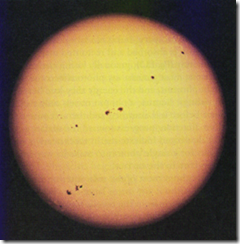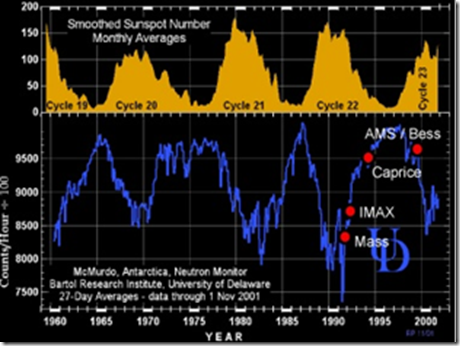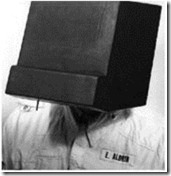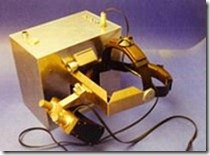Solar particles are the components of the solar wind. They are mainly composed by low energy protons and electrons ejected by the outer shells of the Sun (the Chromosphere) and they have speed near 400 km/s or energies of some KeVs. This condition is called quiet Sun. Solar wind comes directly from the solar Corona, that is a shell of ionized gas (plasma) with temperatures of about 10 millions degree. In the 50’s scientist understood that gravity is not able to keep this plasma bound to the Sun and that it should be in a continuous state of supersonic expansion filling all the solar system.
Solar Corona observed during a solar eclipse (February 26 1998, Guadeloupe, Christian Viladrich, SAF http://www2.saf-lastronomie.com/accueil.html). The irregular shape of the Corona is due to the interaction of the plasma with the solar wind itself.
The trajectory of solar particles is determined by the rotation of the Sun. Like a rotating pump, the trajectory follows an Archimedean (or Parker) spiral. It’s interesting that magnetic field lines are aligned with these trajectories. As shown in the figure, magnetic field lines connect the Earth with a point on the solar surface located on the right side of the Sun.
Solar particles usually does not represents an hazard for astronauts safety, but occasionally events associated with solar flares or coronal mass ejections (CME) could cause a sudden flux increase that can eventually harm astronauts. These events are called generically Solar Particle Events (SPE) and particles have energies of some MeVs (usually under 100 MeV).
A solar flare implies a large energy release in the form of electromagnetic radiation and charged particles that are originated from solar spots. In particular, EM radiation increases in the extreme ultraviolet (EUV), in the X-ray and in radio waves. But also in the gamma ray region, where the Sun is usually not active.

Animated image of a solar flare (click for animation)
CMEs are the most spectacular expressions of eruptive solar activity. The series of frames below were taken by the LASCO coronagraph onboard the Solar and Heliospheric Observatory spacecraft (SoHO; ESA/NASA). In a coronagraph the solar disk is hidden, so that the faint corona is visible as during an eclipse.
The first frame shows the corona before the mass ejection event. The emerging structure on the lower right over the disk is called streamer, and it is a shape commonly seen during an eclipse. In the following frame the gas is pushed towards the outer corona confined by magnetic field lines, At the end the gas leaves the Sun and propagates through the heliosphere. Here the gas shows the structure of the magnetic field. The coronal magnetic field is ejected from the Sun, taking the gas along with it. It’s worth noting that the Sun is the white circle in the center of the coronagraph disk.
Animated image of a CME (click for animation)
The solar cycle
The frequency of these spectacular events is correlated with the solar activity that follows a 11 year cycle. The solar activity is measured from the number of solar spots that are visible on the surface. They increase their number during active sun periods and almost disappear during quiet sun. Solar spots are regions of high magnetic field (0.3 T versus 10-4 T on the rest of the surface).
In the graph the Wolf number (related to the number of spots) is shown together with particle flux measured during solar particle events. The correlation between number of spots and SPE is evident.
The solar activity modulates also the flux of galactic cosmic rays. The image below shows the inverse correlation of cosmic ray flux (blue line) and the number of solar spots (yellow).
The Sun is currently exiting a anomalous minimum period. The first intense flare since December 2006 happened on February 13 2010 (Biggest flare of the cycle)
































